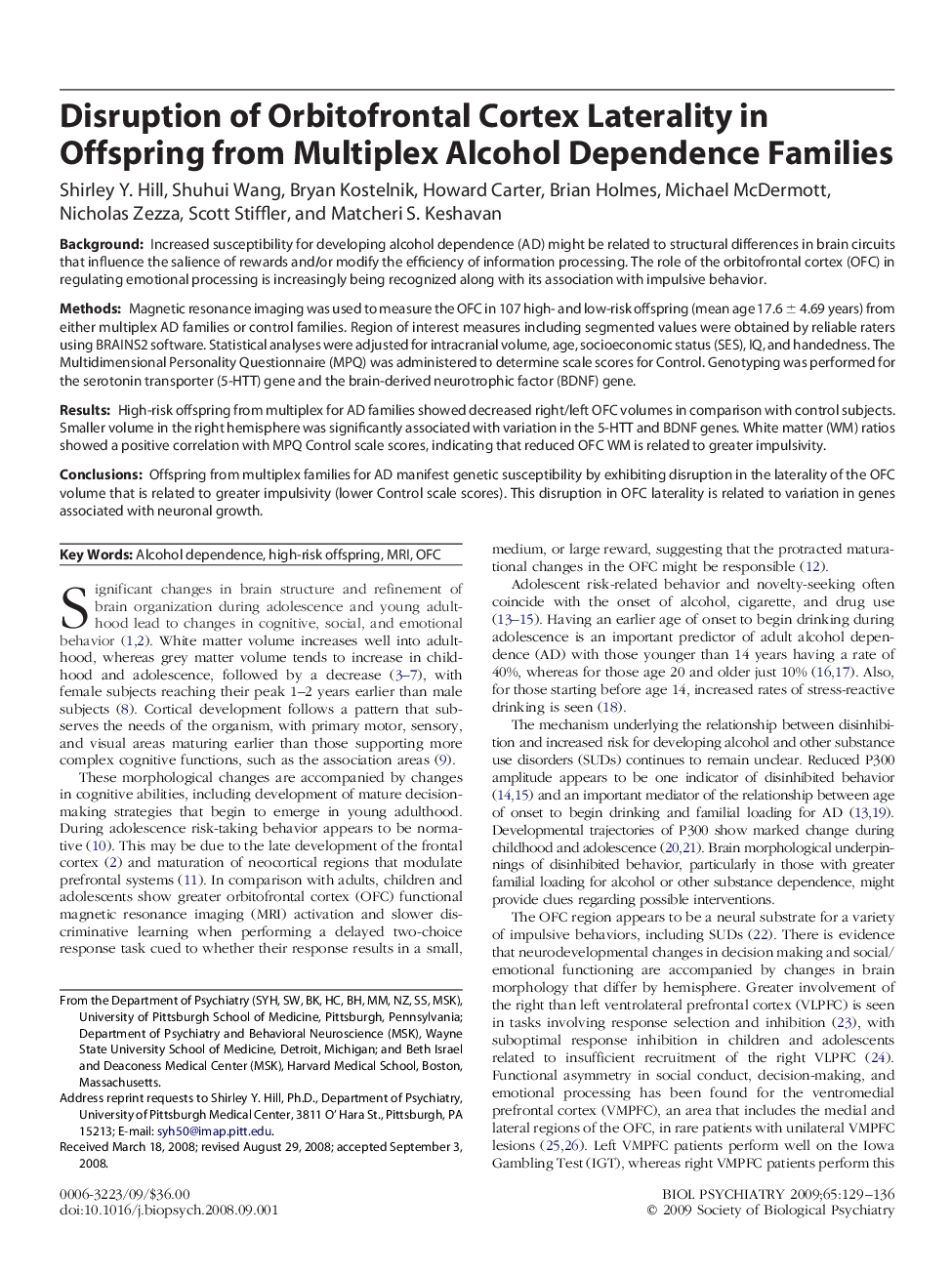| Article ID | Journal | Published Year | Pages | File Type |
|---|---|---|---|---|
| 4180464 | Biological Psychiatry | 2009 | 8 Pages |
BackgroundIncreased susceptibility for developing alcohol dependence (AD) might be related to structural differences in brain circuits that influence the salience of rewards and/or modify the efficiency of information processing. The role of the orbitofrontal cortex (OFC) in regulating emotional processing is increasingly being recognized along with its association with impulsive behavior.MethodsMagnetic resonance imaging was used to measure the OFC in 107 high- and low-risk offspring (mean age 17.6 ± 4.69 years) from either multiplex AD families or control families. Region of interest measures including segmented values were obtained by reliable raters using BRAINS2 software. Statistical analyses were adjusted for intracranial volume, age, socioeconomic status (SES), IQ, and handedness. The Multidimensional Personality Questionnaire (MPQ) was administered to determine scale scores for Control. Genotyping was performed for the serotonin transporter (5-HTT) gene and the brain-derived neurotrophic factor (BDNF) gene.ResultsHigh-risk offspring from multiplex for AD families showed decreased right/left OFC volumes in comparison with control subjects. Smaller volume in the right hemisphere was significantly associated with variation in the 5-HTT and BDNF genes. White matter (WM) ratios showed a positive correlation with MPQ Control scale scores, indicating that reduced OFC WM is related to greater impulsivity.ConclusionsOffspring from multiplex families for AD manifest genetic susceptibility by exhibiting disruption in the laterality of the OFC volume that is related to greater impulsivity (lower Control scale scores). This disruption in OFC laterality is related to variation in genes associated with neuronal growth.
